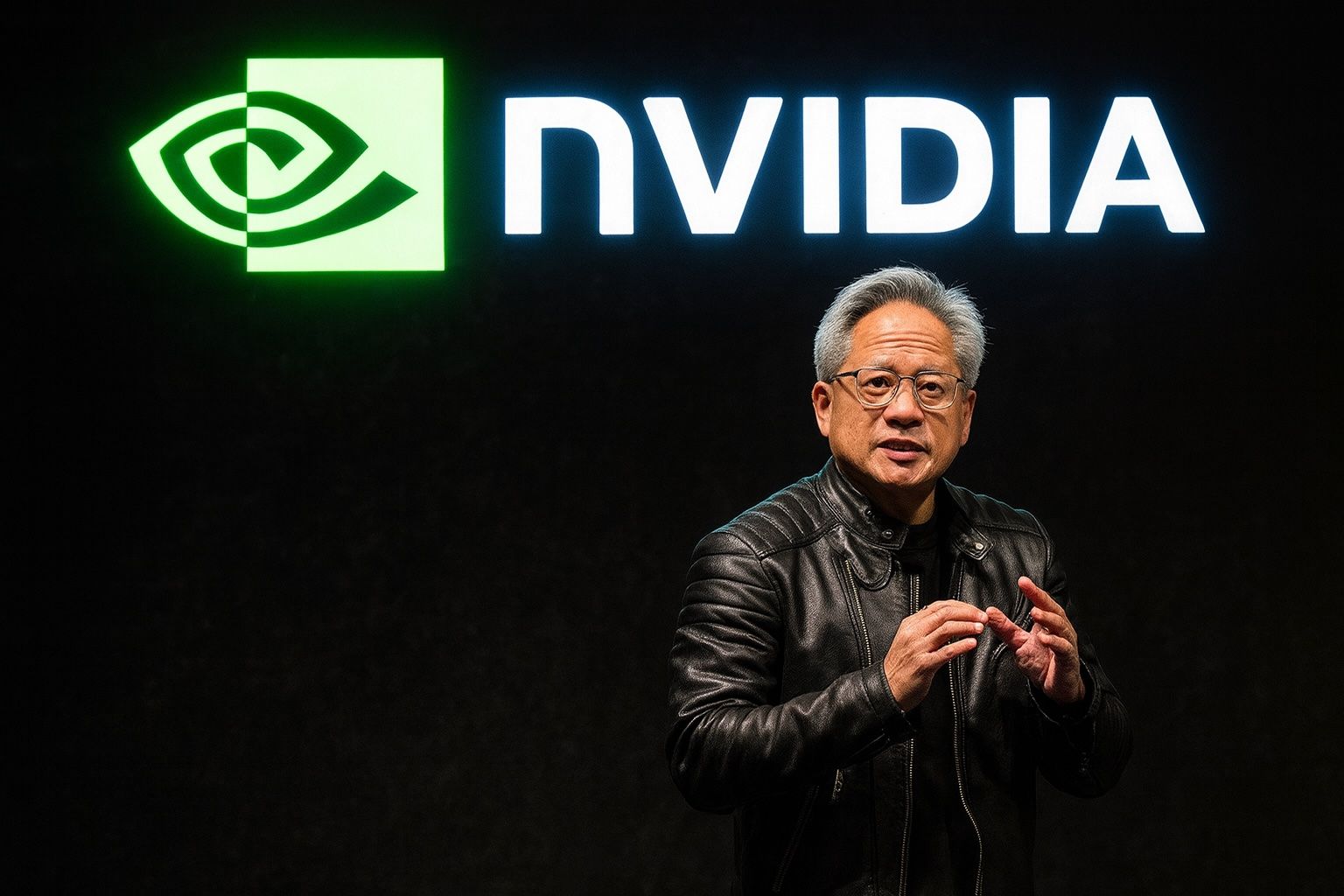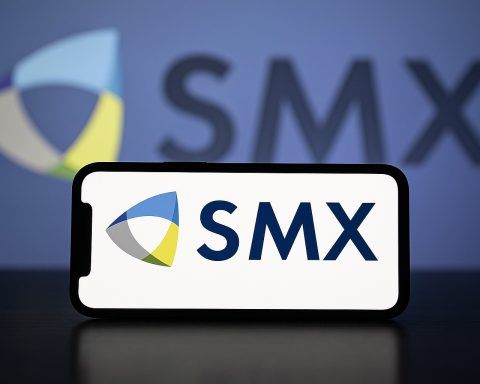Key facts (updated November 5, 2025)
- What happened: Deutsche Telekom and Nvidia unveiled a €1 billion partnership to build an Industrial AI Cloud—a sovereign, enterprise‑grade “AI factory” in Munich, slated to open Q1 2026. [1]
- Scale: The site will host >1,000 Nvidia DGX B200 systems and RTX PRO servers with up to 10,000 Blackwell GPUs, delivering ~0.5 exaflops of AI compute and ~20 PB of storage. [2]
- Sovereignty angle: Built for in‑country processing and compliance, anchored by a “Deutschland‑Stack” with SAP as the application backbone. [3]
- Early users & partners: Ecosystem signals include Siemens (industrial AI), Mercedes‑Benz and BMW (digital twins), Agile Robots and Wandelbots (robotics), and Perplexity (sovereign inference in Germany). [4]
- Policy backdrop: The EU AI Act entered into force Aug 1, 2024; major obligations roll in Feb 2, 2025 (prohibitions), Aug 2, 2025 (GPAI duties), and Aug 2, 2026 (full enforcement). [5]
- Market check (intraday):Nvidia (NVDA): $198.69, down ~4% as of 11:45 UTC; 52‑week range: $86.62–$212.19. SAP (SAP): $259.64, down ~1.7% (11:30 UTC). Deutsche Telekom (DTEGn.DE): €26.67, +0.19% (Frankfurt, delayed). [6]
- Today’s coverage: Reuters confirms €1B investment and Q1 2026 go‑live; German tech press highlights 10,000 GPUs and 50% boost to Germany’s AI compute. [7]
- Context: Europe’s wider compute push already includes JUPITER, the EU’s first exascale supercomputer in Jülich, inaugurated Sept 5, 2025 and powered by Nvidia tech. [8]
The announcement in detail
Deutsche Telekom and Nvidia say the Industrial AI Cloud is designed as a “sovereign AI” platform—compute, networking and software kept in Germany, with industry‑grade security and compliance. Nvidia’s blog frames it as the “world’s first AI factory for industry,” blending Nvidia AI Enterprise, Omniverse and DGX‑class systems with Telekom’s cloud and network operations. [9]
Hardware & capacity. Deutsche Telekom’s Munich data center is being fully renovated to host >1,000 DGX B200 systems and RTX PRO Servers, aggregating up to 10,000 Blackwell GPUs. Deutsche Telekom lists ~0.5 EFLOPS of compute, ~20 PB storage, and multiple 400‑Gbps fiber uplinks. Operations begin Q1 2026. [10]
Who will use it? The partners spotlight industrial AI: digital twins for factories (Siemens), complex vehicle simulations (Mercedes‑Benz, BMW), and robotics training/inference (Agile Robots, Wandelbots). Perplexity will provide in‑country AI inference for German enterprises and users. [11]
Why now? The launch aligns with the phased EU AI Act timetable: bans on certain practices have applied since Feb 2, 2025; GPAI model duties started Aug 2, 2025; broader enforcement arrives Aug 2, 2026. A sovereign, compliant compute stack gives German industry a way to scale AI while addressing residency and governance requirements. [12]
What’s new today (Nov 5) & the last few days
- Reuters (Nov 4): Confirms €1B partnership; the Munich site reuses a refurbished data center; go‑live Q1 2026. [13]
- Nvidia blog (Nov 4): Positions the platform as a “new era” for German industrial AI; sets early 2026 for customer access; details partners. [14]
- Deutsche Telekom press (Nov 4): Puts numbers on the build (10,000 Blackwell GPUs, 0.5 EFLOPS) and names SAP as backbone of the Deutschland‑Stack; says AI capacity could lift Germany’s compute by ~50%. [15]
- Tech/telecom trade coverage (Nov 4–5): TechCrunch, Light Reading and German outlets (Heise, FAZ) echo the €1B, 10,000 GPUs, Q1 2026 timeline; some coverage stresses the symbolic sovereignty push—and lingering vendor dependence on Nvidia hardware. [16]
Expert voices (short quotes)
- Tim Höttges, Deutsche Telekom CEO: “AI is a huge opportunity… to improve our products and strengthen our European strengths.” [17]
- Jensen Huang, Nvidia CEO: “These computers… are factories of intelligence.” [18]
- Loop Capital (June): Analysts flagged a coming “Golden Wave” of generative‑AI adoption when raising NVDA targets. [19]
How this ‘AI factory’ fits Europe’s compute strategy
Europe has been racing to close its compute gap. JUPITER, inaugurated Sept 5, 2025, became the EU’s first exascale system, powered by Nvidia Grace Hopper technology and assembled by European partners. The Munich Industrial AI Cloud complements that public‑research compute with commercial, sovereign AI capacity for industry, targeting digital twins, robotics, and regulated workloads. [20]
Regulatory milestones mean data localization, auditability and model governance will increasingly be core procurement criteria. Building a sovereign node with SAP’s platform and Telekom’s network could make it easier for German firms—especially OEMs and Mittelstand manufacturers—to adopt AI without shipping sensitive data abroad. [21]
Architecture & operations snapshot
- Compute:Blackwell‑class GPUs; DGX B200 systems; RTX PRO servers. [22]
- Connectivity: four 400‑Gbps fiber links; Telekom T‑Cloud integration. [23]
- Timeline: customer access early 2026; contracts “designed for speed and flexibility.” [24]
- Build approach:Refit of an existing Munich data center with partner Polarise; robots from Agile Robots will even help install racks. [25]
Risks & open questions
- Vendor concentration: Coverage in German media notes the sovereignty intent but also the continuing hardware reliance on a U.S. supplier (Nvidia). [26]
- Power & cooling: Telekom cites energy‑efficient design, but grid & sourcing details are limited publicly. (Telekom lists efficiency goals but no PUE/renewables splits yet.) [27]
- Supply chain timing: Blackwell ramp and delivery windows across multiple global deals (e.g., South Korea’s ~260k‑chip commitment) could create allocation trade‑offs. [28]
- Revenue pacing: Telekom positions the project as a growth engine; material P&L impact is more likely in 2026+ once capacity opens. [29]
Stocks: today’s move & 12‑month outlook (not investment advice)
Nvidia (NVDA)
- Today:$198.69 (‑~3.8% intraday, 11:45 UTC). 52‑week range: $86.62–$212.19. [30]
- Set‑ups & catalysts:
- Our scenario view (12 months):
- Base case: Hyperscaler and sovereign‑AI demand remains firm; NVDA trades roughly in the $200–$230 band as earnings compound and supply balances.
- Bull case: Faster Blackwell ramps plus sovereign wins (like Munich) drive upside re‑rating toward the high end of sell‑side targets (~$250). [33]
- Bear case: AI capex digestion and China/export or supply frictions compress multiples, pulling shares toward $150–$180 (roughly ~20–25× NTM EPS on cautious scenarios).
(These ranges synthesize recent analyst targets and macro/AI‑capex sensitivity; they are not a prediction or financial advice.)
Deutsche Telekom (DTEGn.DE)
- Today:€26.67 (+0.19%, Frankfurt delayed). 52‑week range: €26.00–€35.91. [34]
- What matters:
- Timing: The AI cloud contributes from 2026, not 2025. Near‑term focus is still core telco and T‑Mobile US exposure. [35]
- Analyst stance: Reuters shows a mean rating ~1.76/5 (Buy) across ~21 analysts. [36]
- Catalyst:Q3 2025 results on Nov 13, 2025 may include further color on capex and AI‑cloud commercialization. [37]
- Our scenario view (12 months):
- Base case: Stock range‑bound in the high‑€20s as investors wait for 2026 AI revenues; dividend and TMUS exposure anchor downside.
- Upside case: Clear bookings for the Industrial AI Cloud and EU sovereignty wins lift growth expectations, pushing shares toward low‑€30s.
- Downside case: Competitive pressure in German core + delayed AI ramp keep shares near the €26–€27 floor.
SAP (context stock)
- Today:$259.64 (‑~1.7% intraday, 11:31 UTC). SAP’s Deutschland‑Stack role makes it an application‑layer beneficiary if industrial customers standardize on its BTP in the sovereign cloud. [38]
Strategic implications for Europe
- Industrial digital twins go mainstream. With Omniverse‑based workflows available on a sovereign stack, engineering simulations and robotics validation can move from pilot to production for EU manufacturers. [39]
- Public‑private complementarity. The Munich AI factory adds commercial capacity alongside EuroHPC systems like JUPITER—research vs. enterprise lanes that together build compute sovereignty. [40]
- Compliance as a feature. As the EU AI Act phases in, providers who can prove locality, governance and audit trails will win regulated workloads—precisely the pitch behind Telekom/Nvidia’s announcement. [41]
Primary sources & notable quotes (for further reading)
- Deutsche Telekom press release (Nov 4): Specs (10,000 Blackwell GPUs, 0.5 EFLOPS), Munich location, Q1 2026 go‑live, SAP “Deutschland‑Stack,” Perplexity inference. [42]
- Nvidia blog (Nov 4): Ecosystem (Siemens, BMW, Mercedes‑Benz, Agile Robots), early‑access in 2026, sovereign design. [43]
- Reuters (Nov 4): Confirms €1B and Q1 2026; facility is a refurbished Munich data center. [44]
- German tech press (Nov 4–5): Heise, FAZ detail 10,000 GPUs and sovereignty positioning; commentary notes continued hardware dependence on Nvidia. [45]
- EU AI Act (official): Entry into force and staged applicability through 2026. [46]
- JUPITER exascale (official/press): Inaugurated Sept 5, 2025 at Jülich, Nvidia‑powered exascale node for European science. [47]
What to watch next
- Nov 13, 2025 — Deutsche Telekom Q3 2025 results: Any guidance on AI‑factory bookings, capex cadence, and pricing/contract structures. [48]
- Nov 19, 2025 — Nvidia Q3 FY26 earnings: Updates on Blackwell supply, sovereign‑AI pipeline, and data‑center margins. [49]
- Through 2026 — EU AI Act enforcement ramp: Procurement patterns may favor sovereign solutions, influencing customer adoption in Germany/EU. [50]
Bottom line: Germany’s Industrial AI Cloud is a pivotal sovereign compute step: not as massive as hyperscaler campuses, but purpose‑built for regulated, industrial AI with data residency by design. If the platform fills capacity and spurs an ecosystem around digital twins and robotics, it can help bend Europe’s AI adoption curve—while giving NVDA another beachhead and DTE a new, higher‑margin growth vector from 2026 onward. [51]
References
1. www.reuters.com, 2. www.telekom.com, 3. www.telekom.com, 4. blogs.nvidia.com, 5. commission.europa.eu, 6. www.reuters.com, 7. www.reuters.com, 8. www.eurohpc-ju.europa.eu, 9. blogs.nvidia.com, 10. www.telekom.com, 11. blogs.nvidia.com, 12. digital-strategy.ec.europa.eu, 13. www.reuters.com, 14. blogs.nvidia.com, 15. www.telekom.com, 16. www.heise.de, 17. www.telekom.com, 18. blogs.nvidia.com, 19. www.reuters.com, 20. www.reuters.com, 21. news.sap.com, 22. www.telekom.com, 23. www.telekom.com, 24. blogs.nvidia.com, 25. www.telekom.com, 26. www.welt.de, 27. www.telekom.com, 28. www.reuters.com, 29. www.reuters.com, 30. www.reuters.com, 31. investor.nvidia.com, 32. finance.yahoo.com, 33. www.reuters.com, 34. www.reuters.com, 35. www.reuters.com, 36. www.reuters.com, 37. www.telekom.com, 38. news.sap.com, 39. blogs.nvidia.com, 40. www.eurohpc-ju.europa.eu, 41. digital-strategy.ec.europa.eu, 42. www.telekom.com, 43. blogs.nvidia.com, 44. www.reuters.com, 45. www.heise.de, 46. commission.europa.eu, 47. www.eurohpc-ju.europa.eu, 48. www.telekom.com, 49. investor.nvidia.com, 50. digital-strategy.ec.europa.eu, 51. blogs.nvidia.com





